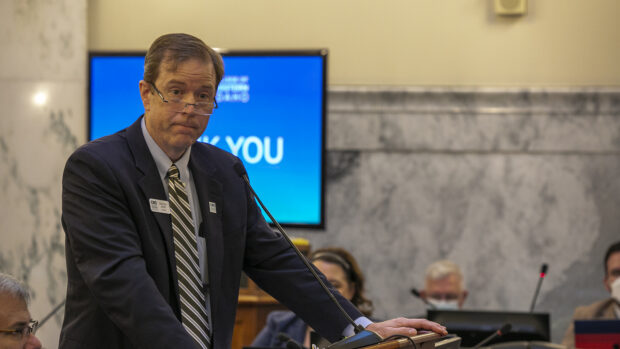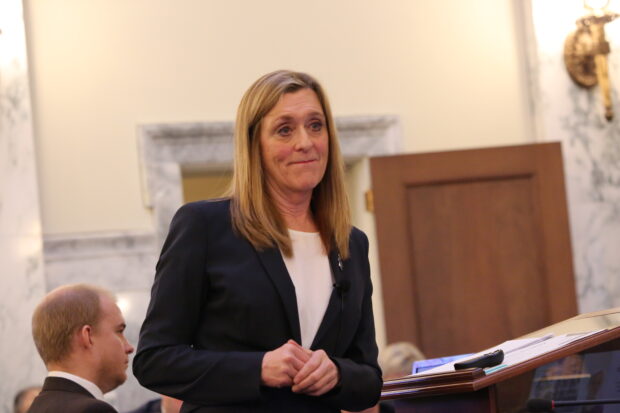We start today with a wonky word.
Systemness.
The State Board of Education didn’t invent this word, to be fair. But the board uses systemness, a lot, as a shorthand description for what it wants to see in higher education. More collaboration. Limited duplication. A statewide network of two- and four-year colleges and universities that functions like a system — spending tax dollars efficiently, while offering students as many options as possible.
Fair warning: Expect to hear systemness at some point at next week’s State Board meeting. Maybe multiple times. That’s because two of Idaho’s two-year schools want to offer four-year degrees.
Nampa-based College of Western Idaho wants to add a bachelor of applied science, or BAS, degree in business administration. Across the state, in Idaho Falls, the College of Eastern Idaho is looking at a BAS in operations management.

There is a precedent; the Twin Falls-based College of Southern Idaho already offers an operations management degree. As CWI President Gordon Jones likes to point out, state law has long given Idaho’s community colleges the authority to pursue four-year programs.
But the State Board has to sign on.
Whatever the State Board does, it’s going to make someone unhappy. Either the two-year schools or the four-year schools are liable to walk away disappointed.
Jones and CWI’s board of trustees are all-in on their business administration proposal. Since the program would offer a four-year degree at community college prices — and allow students to put career-technical credits toward a baccalaureate — CWI believes it can serve students who wouldn’t be interested in a traditional business program.
“It’s just creating more access and opportunity for students,” board Chair Molly Lenty said last month, after trustees passed a resolution endorsing the bachelor’s program.
The four-year schools are opposed — which is no surprise, they already offer bachelor’s degrees in business administration. Boise State University is particularly salty. In their official comments on the proposal, submitted to the State Board, Boise State officials accuse CWI of going it alone and refusing to collaborate, and even work in a jab over CWI’s low graduation rates. And Boise State says CWI is simply trying to duplicate existing programs.
“The assertion that ‘CWI is poised to reach a market that is underserved by four-year institutions’ is inaccurate, unsupported and frankly outright misleading,” Boise State writes.
Well, that doesn’t sound very systemness-y.
This all puts the State Board in a position it cannot possibly relish. Whether they want to or not, board members will be forced to pick sides.
Relatively speaking, these board members have probably had it easier than their predecessors. It wasn’t that long ago when higher ed turf wars were commonplace — with college and university presidents egged on by parochial legislators. These days, the presidents of Idaho’s four four-year schools routinely appear together before lawmakers, stressing their solidarity and touting their partnerships with the state’s community colleges.
So the public battle over bachelor’s degrees is an outlier. But not necessarily a one-off.
Last month, Jones hinted that CWI might augment its business administration bachelor’s degree with similar degrees in other high-demand fields: education and health care. If those proposals come down the pike, the State Board could again find itself playing referee.

When the State Board met at Lewis-Clark State College in October, President Cynthia Pemberton read off the list of changes in Idaho higher ed: the community colleges’ proposed bachelor’s offerings; the University of Idaho’s proposed University of Phoenix acquisition; Brigham Young University-Idaho’s plans to offer three-year bachelor’s degrees. All of this comes at a time when high school enrollment is declining in Lewis-Clark’s backyard, foreshadowing a demographic cliff that is going to affect all colleges and universities in the next few years.
“The higher education context and landscape is complicated and challenging,” she said.
And Pemberton didn’t bring up yet another change: Idaho Launch. This year, high school seniors will have up to $8,000 they can use to continue their education — at a four-year school, a two-year school or in a career-technical or workforce training program.
It’s unclear where students will spend this year’s $75 million to $80 million; the state’s Workforce Development Council is still sorting data from the first application period, which closed last week, executive director Wendi Secrist said Wednesday. But it’s clear there will be some competition for a share of the money from Launch — and competition to provide the courses and programs that meet the goal of preparing young adults for in-demand careers.
More options for students is clearly a good thing.
But options can be messy for the policymakers who are trying to stretch dollars and avoid redundancy.
The lines between two-year schools and four-year schools are blurry already. For example, high school students can apply their dual-credit classes — funded by taxpayers through the state’s Advanced Opportunities program — for a two-year associate’s degree at Boise State. By the same token, it’s probably inevitable that the two-year schools would look to move into the bailiwick of four-year degrees.
Next week’s State Board meeting will provide a little better idea of what systemness looks like.
Kevin Richert writes a weekly analysis on education policy and education politics. Look for his stories each Thursday.
